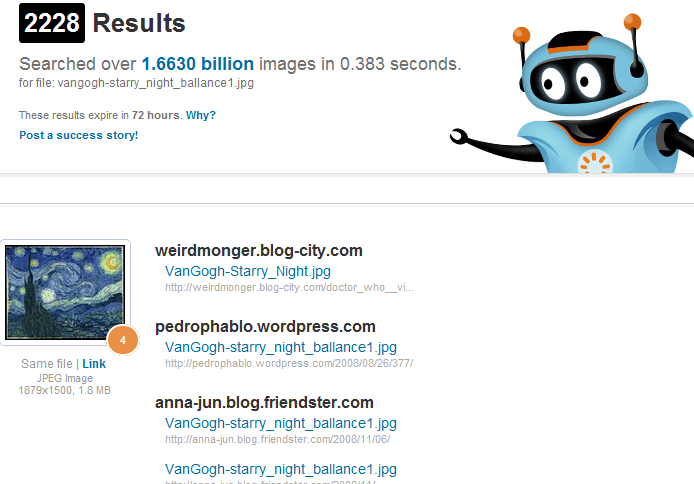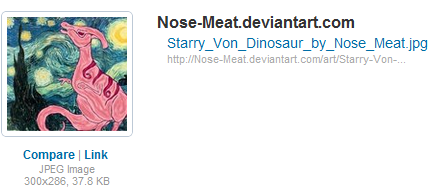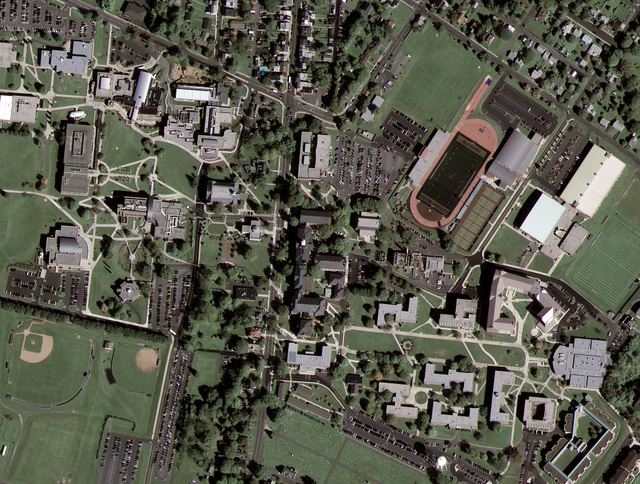There’s no doubt about it, TinEye is a great find for image use:
TinEye is a reverse image search engine. It finds out where an image came from, how it is being used, if modified versions of the image exist, or if there is a higher resolution version.
TinEye claims to be responsible for ‘changing the face of media search’. It claims to do for images what Google does for text. I don’t know about you but I’ve been waiting for something like this for ages. Now you can locate your image on websites all over the internet.
Searching your image:
Instead of searching by keyword, you either upload an image from your computer or provide a link to that image. It only takes a few seconds for the results to appear. The first images listed are the ones which are the closest match to the searched image. As you go further down the list, you find edited images – interesting in itself.
You can compare any of the matched images to your image by clicking compare and then switch. In some cases it’s a colour/tone difference or else the image has been modified. The link under the image will take you to the page of the result. It’s great if you are looking for a different size, eg a better resolution.
There is an option to share the image via Twitter, Facebook, email or an extensive list of other ways. I’m so spoiled with sharing options that when I’m unable to share easily I get really frustrated.
With TinEye you can sort the order of your search by:
- best match
- most changed
- biggest image.
You can also install browser plugins if you like.
If you register with TinEye you can contribute to the forum. I have a feeling this site will be growing, and I wonder how many copy-cat sites will be created now.
Have a play! I’m going to think about educational possibilities using the TinEye image search. As always the technology opens up to options powered by human imagination and innovation.



